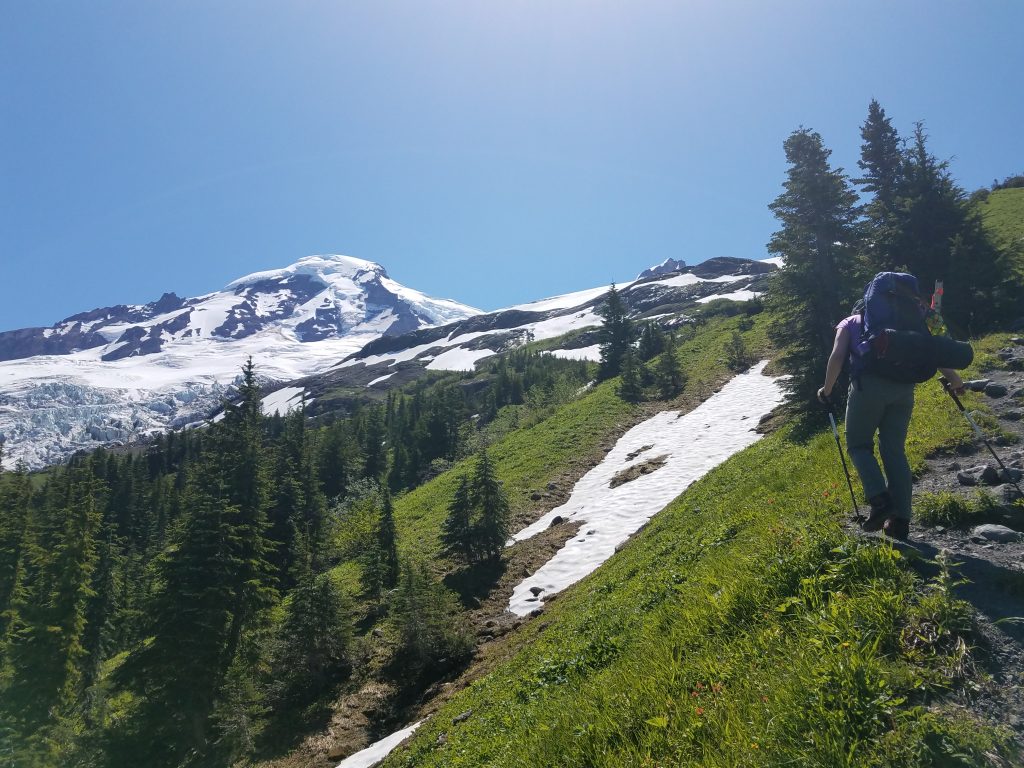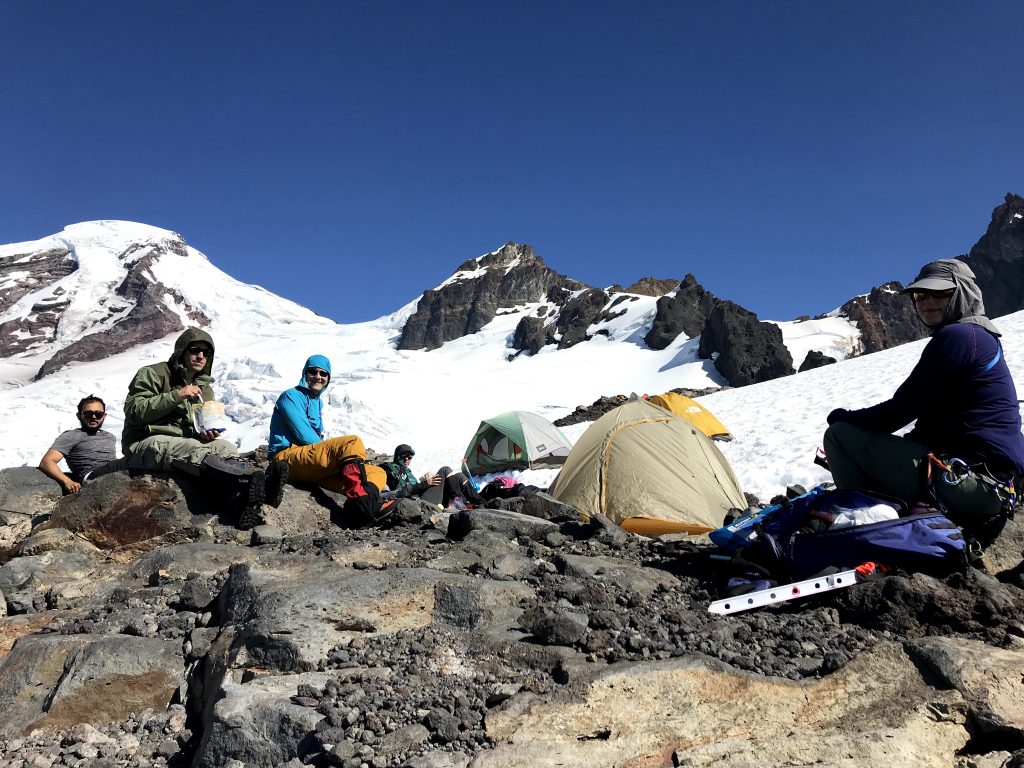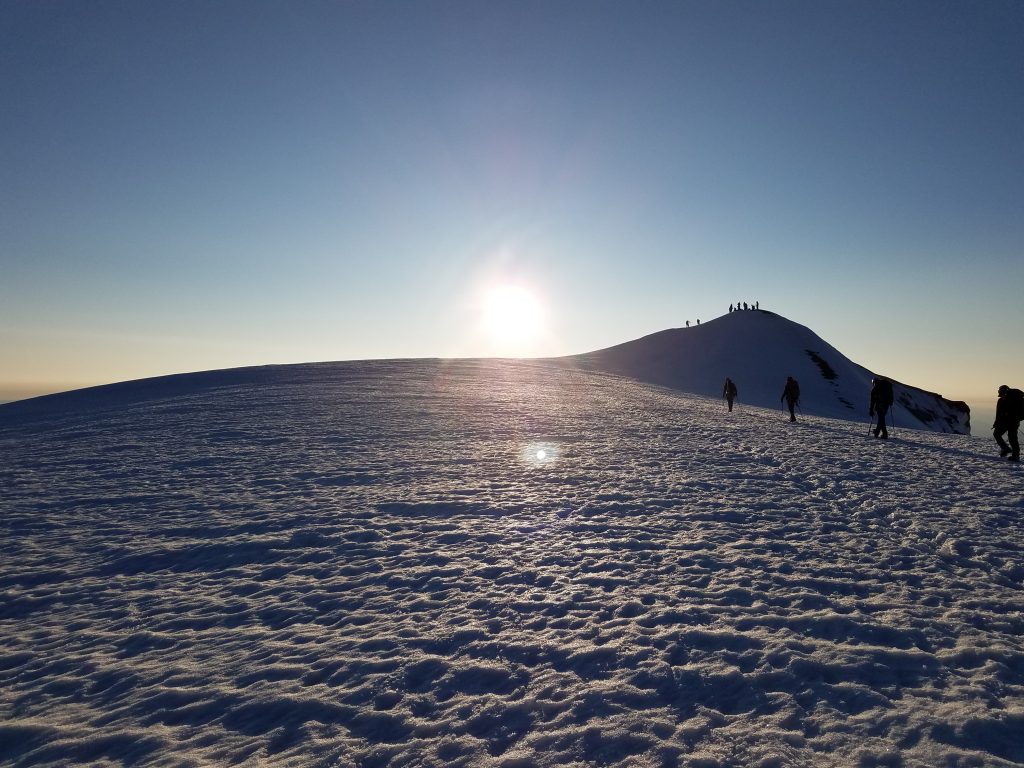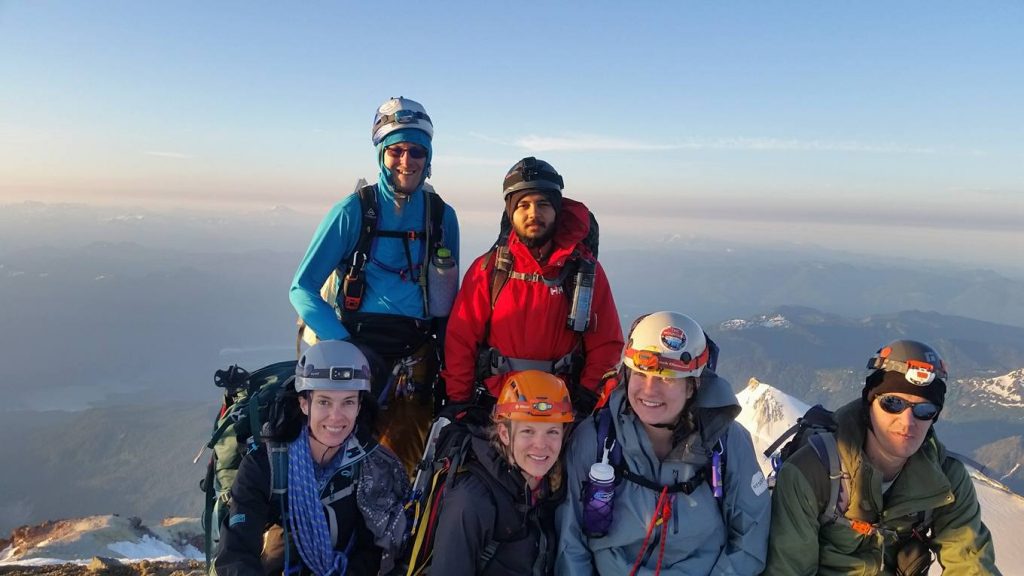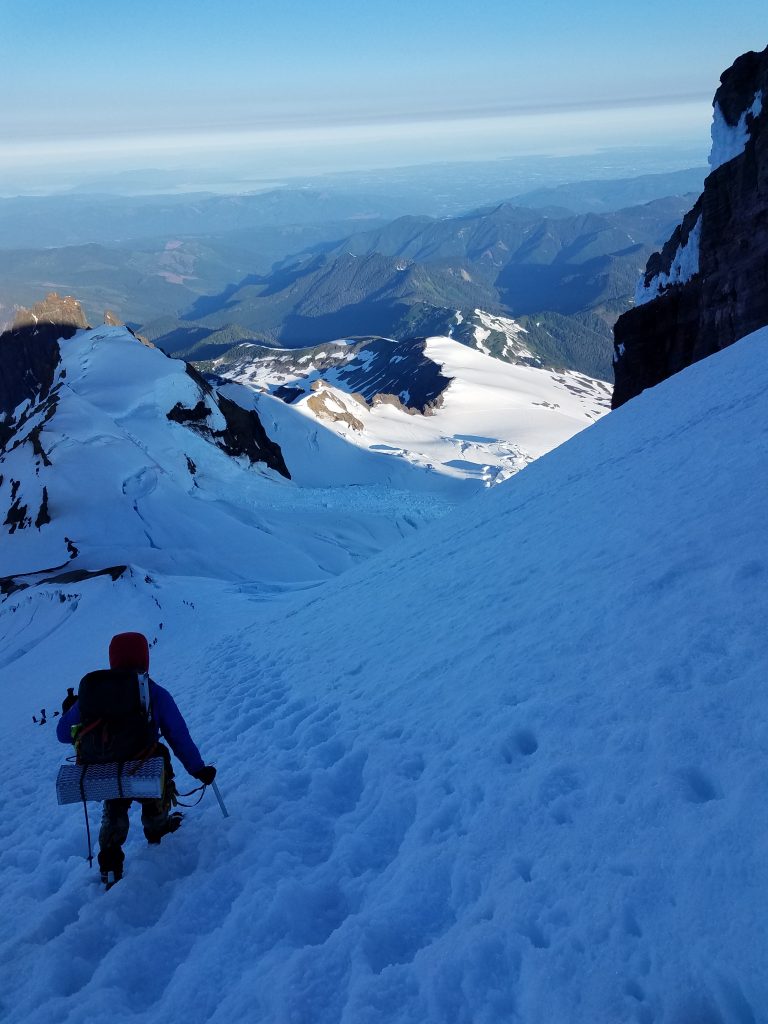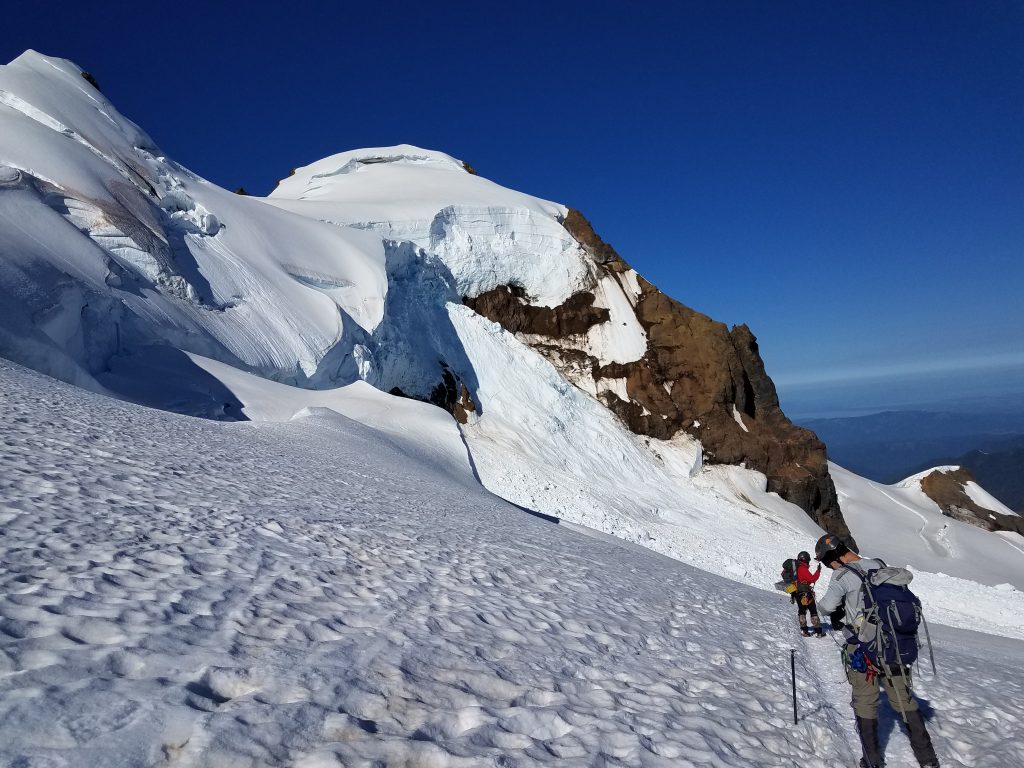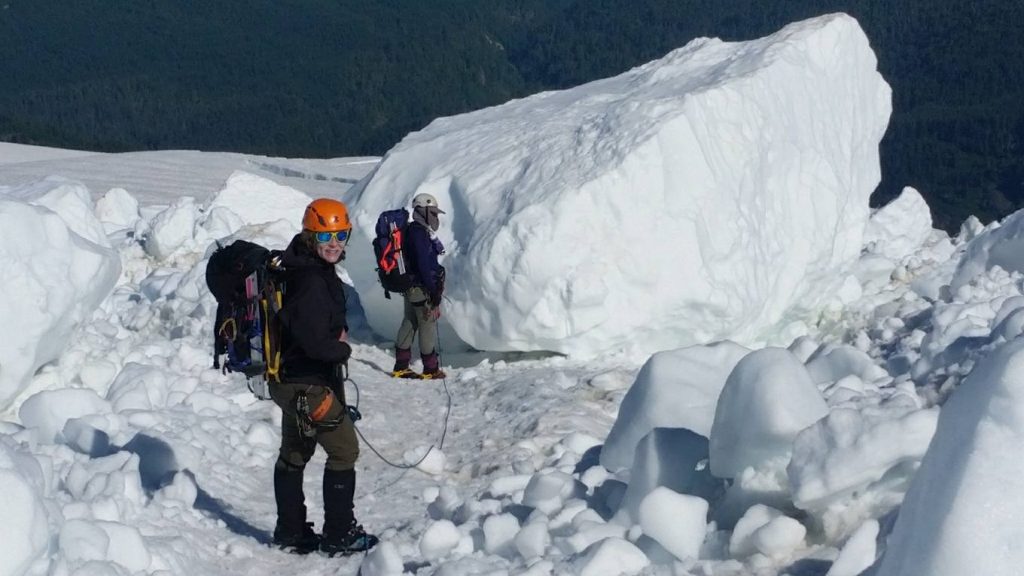For the last few weeks, some Mountaineer friends, Jenny, and I had been planning to climb Mount Baker, Washington’s 4th highest mountain (if you count Little Tahoma as number 3). The last two weekends, though, we were weathered out.
This weekend, the weather looked great, though. We went up the Coleman-Deming route, starting leisurely on Saturday around 10 AM. We roped up at the top of the Hogsback, at the toe of the glacier. Snow was very soft. We put crampons on, but in retrospect, they weren’t helpful.
We camped at around 6800 feet, not at the Heliotrope Ridge camp (which was unnecessarily high and out of the way) or at the Black Butte High Camp (which had rock fall and, as far as we could tell, no running water). We had running water, but needed to shovel platforms.
Because of the very hot day and soft snow, we got up 11 PM and departed at midnight. We reached the summit around 6:30, but we also went very slowly and didn’t push at all. The snow was perfect styrofoam for cramponing in the morning.
We unroped just above the Colfax col and scrambled up the dirt ridge. Upon reaching the snow slope below the Roman wall, we decided to stay unroped. There were no visible crevasses, and we decided it was safer to not pull someone else down on a possible slip (there were lots of teams making questionable rope decisions, like three climbers with about 3 feet of rope in between climbers…). In the end, it was less steep than it appeared from below. I still think we made the right decision to stay unroped. We roped up again on the descent after the pumice portion, just above Colfax col.
After tearing down camp, we roped up yet again, even though the crevasses were tiny, but we wanted to set a good example. Most of us didn’t put their crampons on again. The snow was too slushy at that time (around 1 PM).
There was new ice fall debris below Colfax peak, and on the way up, my rope team didn’t find the best way through. At around 8320 feet, we headed nearly straight up-slope (south-southeast), when we should have tried to cross the ice fall (southeast). That would have gotten us to a nice flat glacier section again. We found a better way on the descent during daylight.
There were a few crevasses, but most of them were small, less than a foot. They started around 6600 feet. The two biggest ones were below the Colfax col, at around 8800 feet. The lower one was several feet wide but had a huge, solid snow bridge across; the higher one was a little over a foot wide and could be stepped over or jumped. Near the summit rim, a crevasse/bergschrund was starting to form on the climber’s left, but it didn’t reach across yet.
The road to the trailhead was in good condition, for the most part, but there were some rather big potholes, and it’s a one-lane road, so my maximum speed was probably about 20 mph. Still, no problem for my Camry.
Equipment used: poles (to the top of the Hogsback), ice axe (from toe of glacier), crampons (useful midnight to around 10 AM), rope (40 meter per team of 3, interval 10 meter, with 10 meters coiled on both ends), two pickets per team, standard personal glacier gear, GPS.
Jenny and I in the summit crater of Mount Baker:
Arriving on Grant Peak, the true summit of Mount Baker. Sharon is excited:
Third team on the summit of Mount Baker:
Rajan, Sean, and I heading down towards the ice fall below Colfax Peak:
Here are two links to my trip reports on Peakery and PeakBagger.

